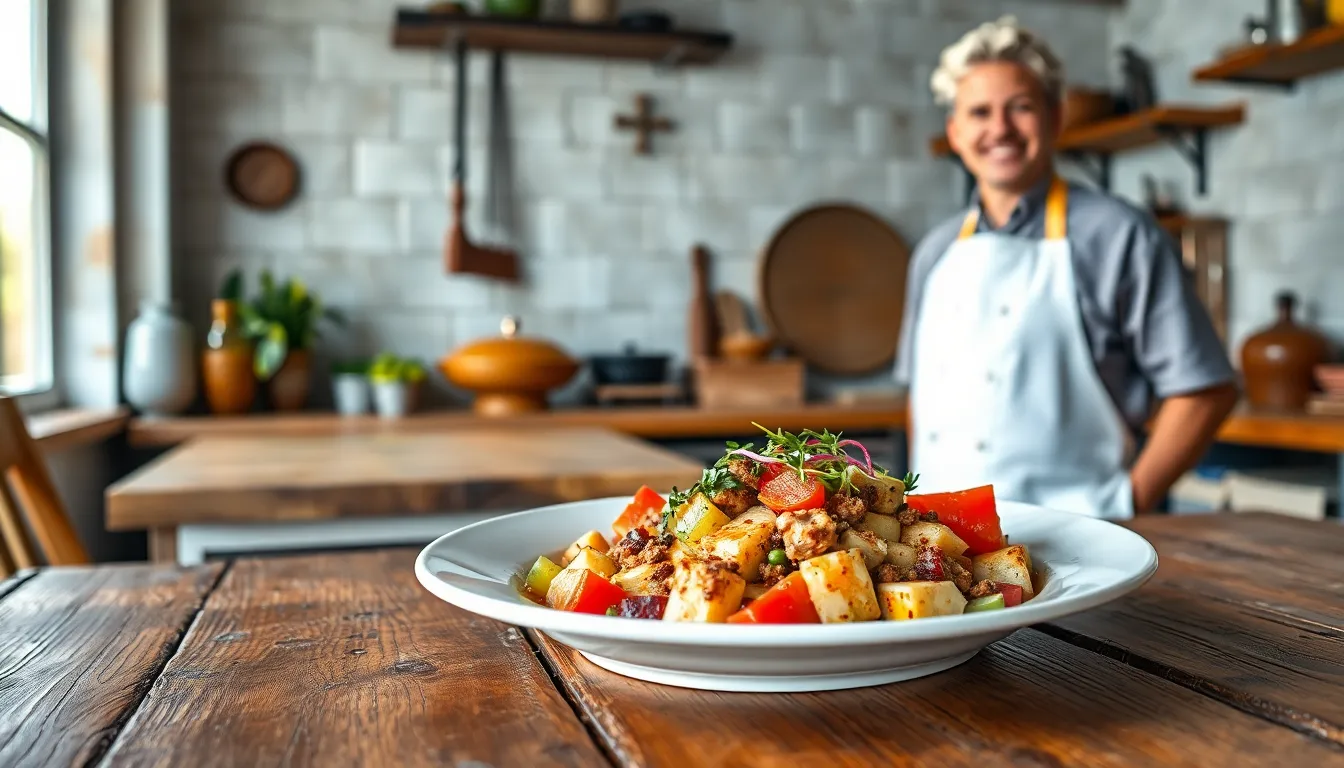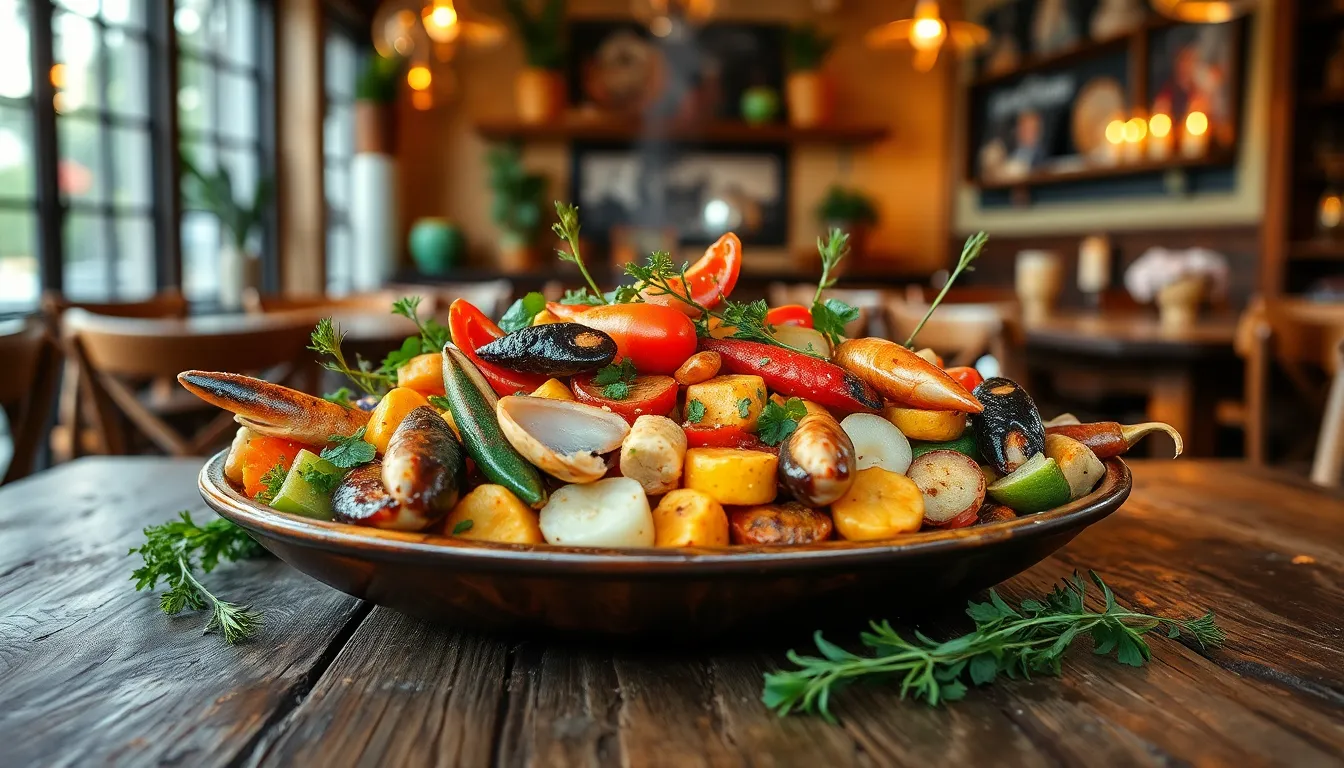In the world of quirky culinary delights, few dishes can compete with the enigmatic babaijabeu. This intriguing delicacy has captured the hearts and taste buds of food enthusiasts everywhere. If you think you’ve tried it all, wait until you dive into the delightful chaos that is babaijabeu. It’s not just a meal; it’s an experience that’ll leave you wondering how something so bizarre can taste so good.
Table of Contents
ToggleOverview of Babaijabeu
Babaijabeu represents a culinary experience that captivates food enthusiasts around the globe. Known for its eclectic combination of ingredients, it engages the taste buds with surprising flavors. Originating from diverse cultural influences, this dish combines textures and tastes that challenge conventional dining expectations.
Exploration of babaijabeu often begins with its unique preparation method. Chefs utilize local and seasonal ingredients to enhance freshness. Flavor profiles typically incorporate savory elements alongside unexpected twists, making each bite an adventure. Diners frequently describe the experience as both whimsical and satisfying.
Many cultures celebrate babaijabeu at special occasions and gatherings. The dish fosters camaraderie among those sharing it, enhancing its appeal. Restaurants specializing in this unique dish often create visually stunning presentations, highlighting the artistry involved in its assembly. Dishes served alongside babaijabeu range from light salads to rich sauces, further elevating the meal.
Popularity of babaijabeu continues to grow as food trends evolve. Online communities share adaptations and personal twists, showcasing the dish’s versatility. As food enthusiasts seek out new experiences, babaijabeu’s reputation reinforces its position in contemporary gastronomy. Ultimately, enjoyment of this dish invites exploration of flavors that surprise and delight, urging diners to embrace the unexpected.
Cultural Significance of Babaijabeu

Babaijabeu holds a rich cultural significance that resonates in culinary practices around the world. The dish intertwines tradition with modernity, creating a unique dining experience.
Historical Background
Origins of babaijabeu trace back to various cultures, showcasing culinary fusion. Diverse influences contributed to its unique flavor profile. Ancient recipes often incorporated local ingredients, reflecting the resources available at the time. Stations of trade and migration popularized spice mixtures, leading to unique regional variations. Communities crafted their versions, forming a vibrant tapestry of history. Practical cooking methods passed down through generations preserved its essence.
Contemporary Relevance
In today’s culinary landscape, babaijabeu has gained immense popularity. Chefs creatively adapt the dish to highlight seasonal ingredients, tailoring it to contemporary tastes. Social media platforms showcase stunning presentations, contributing to its viral status. Food enthusiasts share innovative interpretations, encouraging experimentation. Dining establishments proudly feature babaijabeu, attracting diverse patrons eager for new experiences. Events centered around this dish foster community engagement, enhancing its cultural footprint. Overall, babaijabeu continues to evolve while maintaining its connection to cultural heritage.
Key Ingredients in Babaijabeu
Babaijabeu showcases a fascinating mix of ingredients that define its unique character. The dish blends fresh produce, proteins, and spices, creating layers of flavor that surprise and delight.
Traditional Components
Traditional recipes for babaijabeu commonly feature local staples. Root vegetables, such as beets and carrots, add earthy notes. Fresh seafood, predominantly fish or shellfish, provides a briny contrast. Herbs, including cilantro and dill, enhance freshness and aroma. Some regions incorporate grains like rice or quinoa, serving as a base. These components reflect cultural influences, showcasing the essence of local cuisine.
Modern Variations
Modern interpretations of babaijabeu often embrace creative flair. Chefs might utilize exotic proteins, such as duck or tofu, to appeal to diverse palates. Seasonal vegetables inspire vibrant color and flavor combinations. Sauces, ranging from tangy citrus to spicy aioli, elevate the dish’s complexity. Innovative plating techniques transform babaijabeu into a visual feast, perfect for social media. These variations highlight the dish’s adaptability while attracting a contemporary audience seeking new culinary experiences.
Preparation Methods for Babaijabeu
Preparing babaijabeu requires attention to detail and creativity. This dish combines various techniques to enhance its unique flavors.
Step-by-Step Guide
- Gather Ingredients: Collect root vegetables, fresh seafood, and local herbs.
- Preheat Oven: Set the oven to a moderate temperature for roasting.
- Prepare Vegetables: Cut root vegetables into uniform pieces for even cooking.
- Season Proteins: Marinate seafood with herbs and spices to infuse flavors.
- Assemble Layers: In a baking dish, layer vegetables and seafood systematically.
- Bake: Place the dish in the oven for approximately 30 to 40 minutes until everything is tender.
- Plate Beautifully: Present the dish with garnishes, highlighting its colorful components.
Common Mistakes to Avoid
- Overcooking Ingredients: Monitoring cooking times prevents ingredients from becoming mushy.
- Neglecting Seasoning: Under-seasoning can lead to bland flavors; taste along the way.
- Using Unfresh Ingredients: Only fresh produce enhances babaijabeu’s vibrant taste.
- Ignoring Presentation: Visual appeal matters; take time to plate the dish attractively.
- Rushing the Process: Give adequate time for each step to ensure quality results.
Babaijabeu stands as a testament to the beauty of culinary exploration. Its rich history and evolving nature reflect the creativity and passion of chefs and home cooks alike. With each bite, it invites diners to embark on a flavorful journey that transcends traditional dining experiences.
As food enthusiasts continue to share their adaptations online, babaijabeu’s charm only grows, bringing together diverse communities eager to savor its unique essence. Embracing this dish not only delights the palate but also fosters connections through shared experiences and cultural appreciation. The adventure of babaijabeu is just beginning, and its future in the culinary world looks bright.



